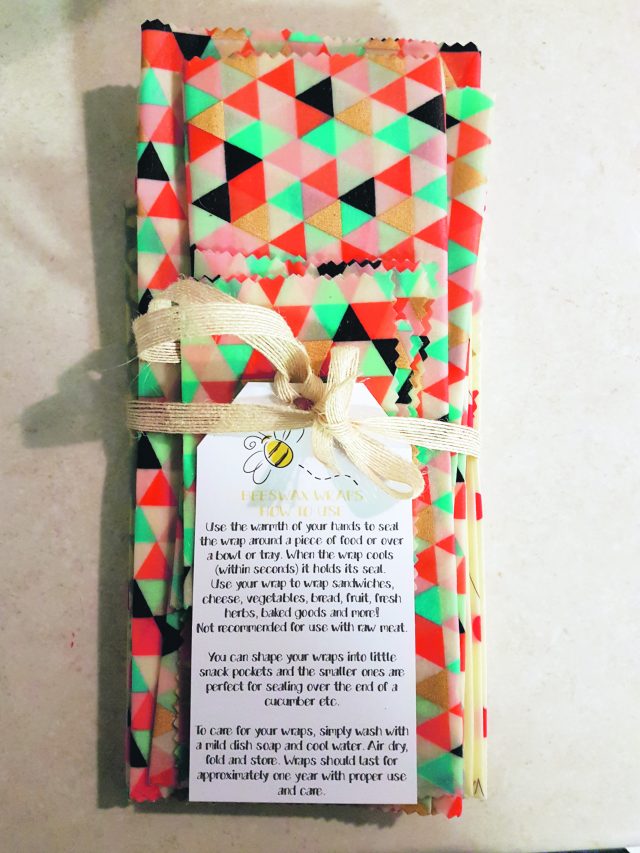When I started on a waste-reduction journey in our household, finding alternatives to single-use plastics in the kitchen was a high priority. Items such as cling wrap, zip lock bags, freezer bags etc quickly add to your waste pile, and then sit around in landfill for 500 years just so we can keep a sandwich fresh. Thankfully there are now plenty of alternatives to these products and I found this one of the simplest switches to make.
My alternative of choice for cling wrap was beeswax wraps. I bought commercially-made ones initially and they worked really well. A piece of cotton fabric coated with melted beeswax and jojoba oil which you place around your bowl, using warmth from your hands to get the wax to adhere to the item. You can also bust out some origami moves and turn these wraps into sandwich pockets or snack containers.
I find the key to successfully removing single-use items is to have plenty of the reusable items available — this removes the temptation to have some on hand just in case you run out. The commercial beeswax wraps can add up, so I had a go at making my own and was pleasantly surprised at the success! It is messy, and quite a bicep workout grating the blocks of beeswax, but a much more affordable option. A set of 25 wraps works out to around $20, and all you need is some cotton fabric (about the thickness of a bed sheet) and a block of beeswax, which you can get locally the Northern Valleys Locavore Store. You can follow this simple method or are more involved process using pine resin here.
I wrap pretty much everything in these wraps, except for onion and raw or deli meats. They are supposedly suitable for use in the freezer, but I have had moderate success in that department. Double wrapping is more effective, but I do tend to stick to containers for freezing.
You clean them by wiping with a cool/warm cloth and a squirt of detergent if needed (mushed avocado, I’m talking to you!). Simply dry on your dishrack and fold up when dry! When they have reached the end of their life (approximately 6-12 months depending on use), they can be popped in the compost to break down.
Recently, there seems to have been quite the boom in these alternative products, which is great for those looking for a less-fiddly option. You can get silicon food wraps, washable food covers (these look like a shower cap for your plates), cotton lunch bags and snack pockets. For fresh produce, an item called The Swag Bag is super convenient, rather than wrapping the cut ends of veggies such as cucumber, you just pop it in a bag and back in the fridge.
If you have the storage space and financial provisions you can invest in any of the plastic and glassware storage systems on the market too. Whatever method you choose will be a great benefit to the environment, and one less aisle to traipse down in the supermarket!








